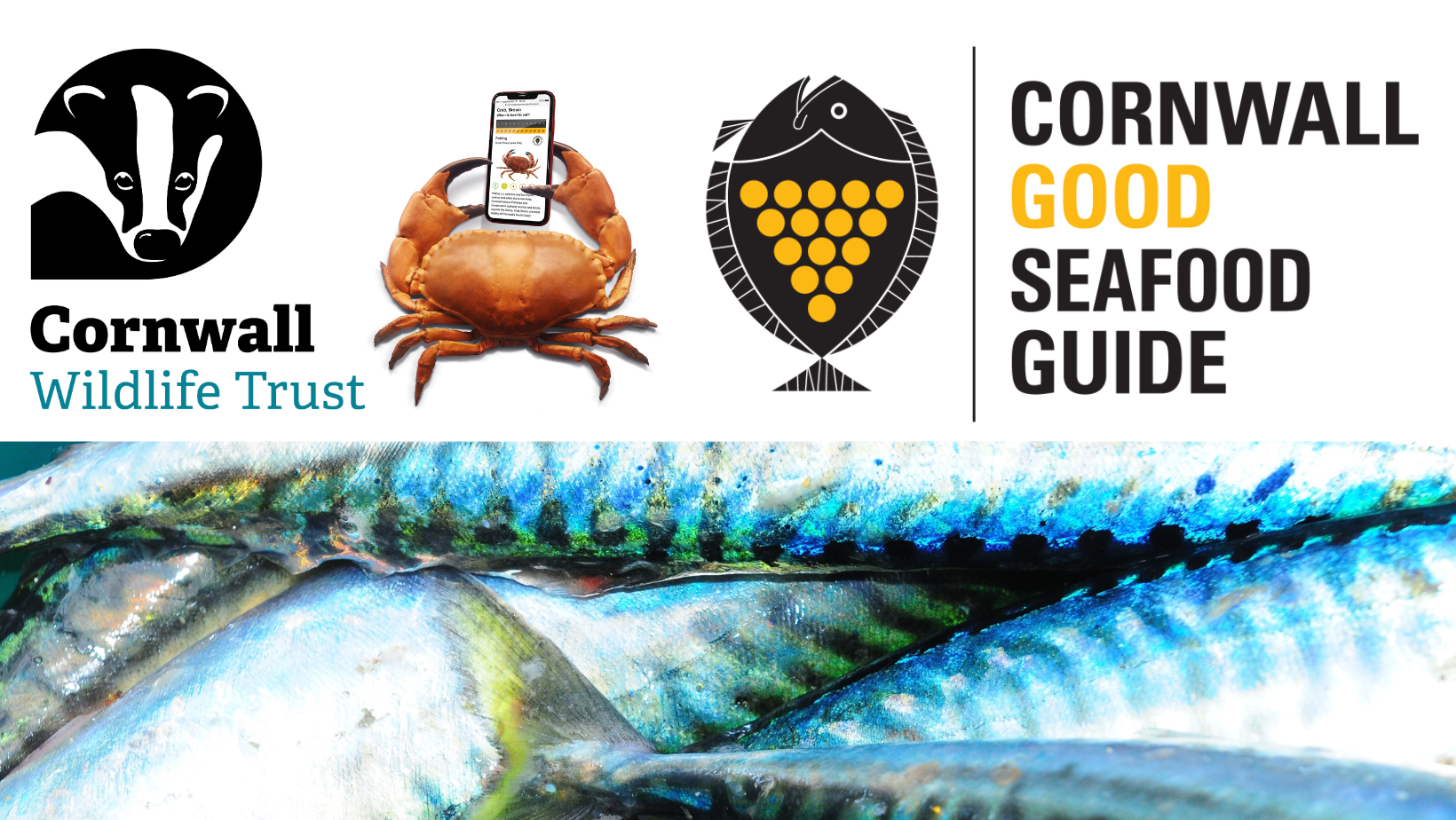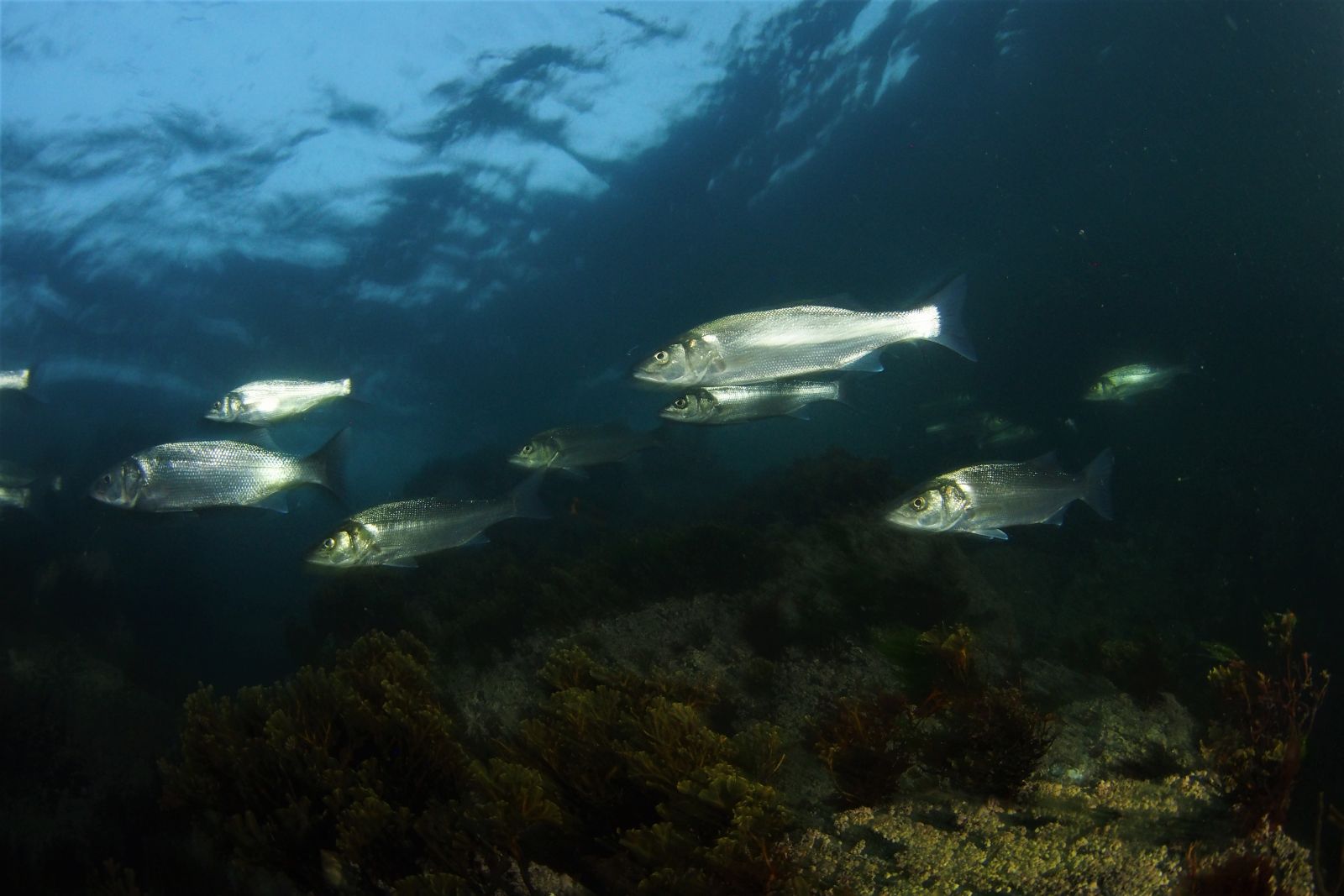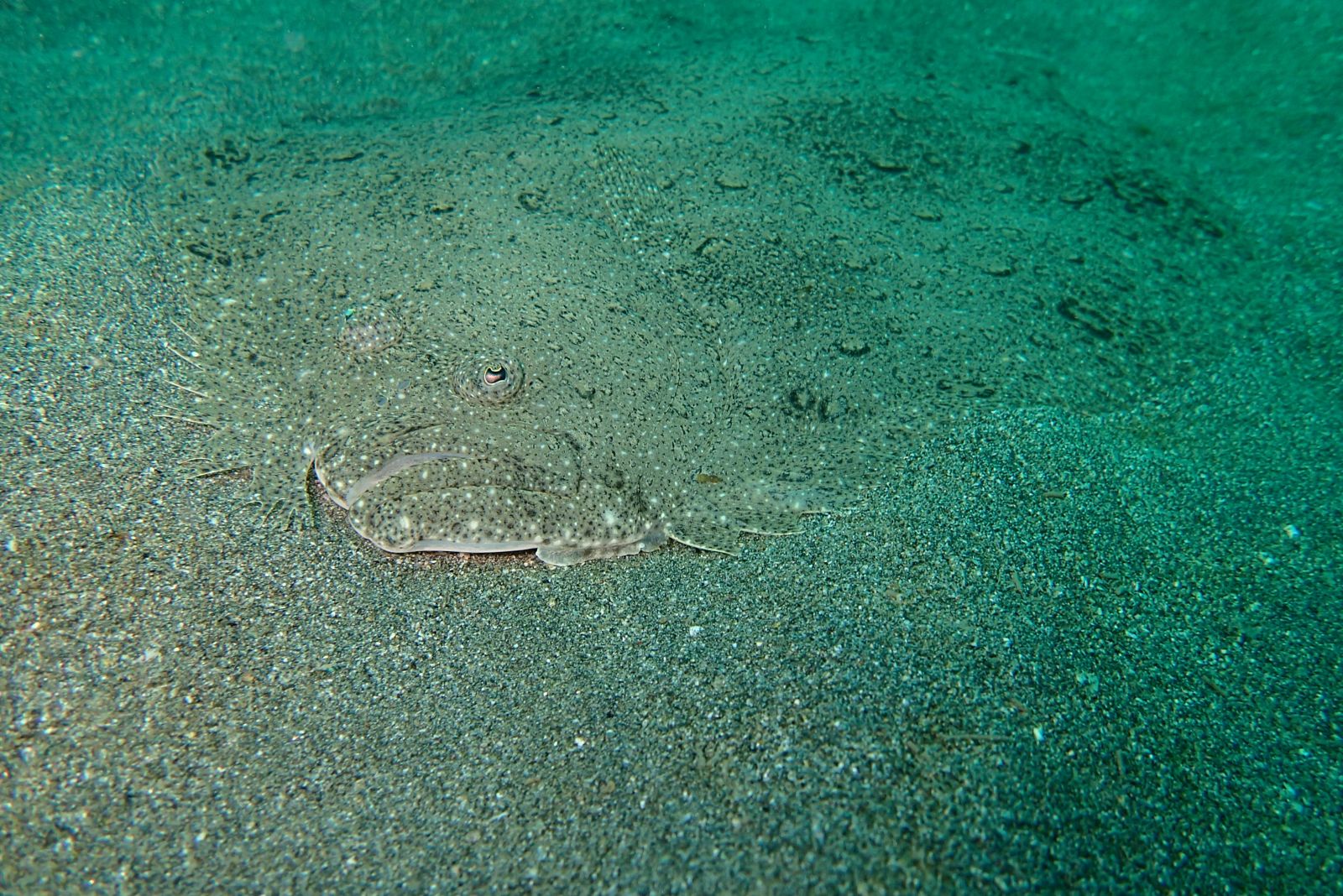
Posted on: 05th October 2023

Following our consultation period, we today are announcing our summer ratings changes, based on the most recent available scientific advice and management information, our ratings have changed and are now amended on our website.
Every year, we update half of our sustainability ratings for Cornwall’s seafood species during winter and half during summer. All current seafood ratings can be found on our website www.cornwallgoodseafoodguide.org.uk
ICES says to cut the pollacks!
A pollack (Pollachius pollachius) spotted on a dive off the Longships lighthouse near Land's End. Credit: Matt Slater
The major change in this update is a downgrading of our pollack rating to 5, a fish to avoid. We appreciate that this is very bad news for inshore fishers, in particular those using low impact and selective methods such as line fishing.
This change is following the first benchmarked stock assessment for UK pollack released by ICES, that advises zero catch for 2024, making the rating for this species a critical fail using our methodology. Pollack stocks have been historically hard to assess using typical methods as the rocky ground they inhabit is hard to survey, however, ICES have much better data this year and were able to release a full stock assessment which revises our previous understanding of the state of pollack stocks.
Fishing pressure, across the entire area, from the combined EU and UK fleet, is significantly above sustainable limits and is continuing to increase with high, but unquantified levels of recreational fishing adding further stress to the stock. The stock biomass has been below MSY since 2003 and has continued to decline, now far below sustainable limits.
Quotas have always been set way above the recommended level, however, catches rarely exceeded ICES advice, especially in recent years. It seems that management is not a limiting factor for fishing pressure. Pollack is of the gadoid family, along with cod, whiting and haddock. These species are typically less heat tolerant, and climate change could be causing poor recruitment in Cornish waters. There are certainly other factors than commercial fishing pressure affecting this stock.
There are concerns for increasing fishing pressure for dover sole in the Western Channel, inducing a slight increase in stock score, which triggers changes to the ratings for beam trawled and gillnet caught dover sole from 2 to 3.
The good news, however, is that seabass is showing signs of improving biomass following the prohibition of directed bass fishing in 2015. Line caught is the best choice in terms of sustainability and quality, the improved stock situation means that trawl caught seabass is on our recommended list this year. Net caught bass is still rated a 4 due to the risk of bycatch of both non-target species, and undersized individuals.

A shoal of seabass (Dicentrarchus labrax) snapped inshore. Credit: Matt Slater
Brill in the Western Channel also appears to have healthy biomass and fishing pressure is low and continues to decrease continues to decrease. Which means that, if caught on Cornwall’s south coast, brill is on our recommended list for all fishing methods.

A well camouflaged brill (Scophthalmus rhombus) on a sandy seabed. Credit: Matt Slater
If you would like to discuss these changes, and what they mean for your business or seafood eating habits, please do get in touch with us via email at seafood@cornwallwildlifetrust.org.uk


Cornwall Good Seafood Guide is underpinned by the Marine Conservation Society (MCS) Good Fish Guide. The first UK consumer guide to sustainable seafood. For more information visit www.fishonline.org
Cornwall Good Seafood Guide is here to help us all make sustainable seafood choices. Choices that will help us keep the oceans healthy and Cornish fishers' futures safe. This website is funded by Cornwall Wildlife Trust. If you would like to make a meaningful difference to the health of our oceans, please consider making a donation to the Cornwall Wildlife Trust Ocean Emergency fund. Your donation will help safeguard these remarkable environments, ensuring that they continue to thrive for generations to come. Together, we can be stewards of the seas and champions for a healthier, more sustainable future.